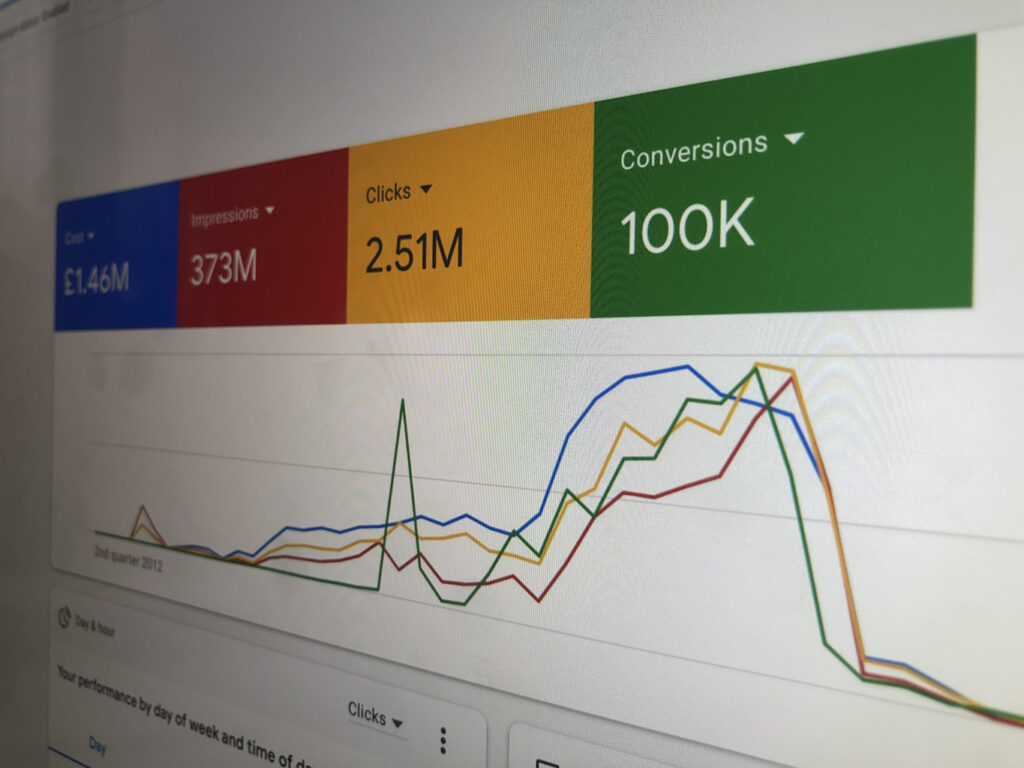I joined Overdrive Digital in February, and it’s safe to say the first few months have been a crazy roller coaster. Within my first few weeks, the UK was hit by a storm and the office flooded, then Covid-19 arrived and now we’re all adjusting to working from home (I hope they don’t think I’m a bad omen).
I started the agency life after working in-house at an Online Job Board for 3 years prior, where my role mainly focused on Email Marketing, Automation, and Organic Social. This meant that PPC (Pay Per Click) was completely new to me, and thanks to an amazing team I feel like I’ve learned so much in a really short space of time. They’ve shown me the ways of Google Ad Manager, introduced me to Supermetrics, and got me up to speed with each client’s individual advertising needs.
Here are my top 3 tips for any PPC newbies out there.
1. Structure is key
Google Ads are set out in this basic structure: Google Ads Account > Campaigns > Ad Groups > Keywords & Ads
It’s important to keep your ads organised, as it’s easy to end up with a messy account the more you continue to test new ideas. I’ve learnt that the best way to do this is to start small and structure your campaigns around your website, as you want to make sure your ads are grouped in a logical way that relates to your business.
For example, here’s how a women’s clothing brand could structure their ads to keep things in order:
| Campaign | Ad Group | Campaign | Ad Group |
| Clothing | Jeans Dresses Shorts T-shirts |
Shoes | Trainers Heels Sandals Flats |
Breaking down the ad groups by product category will help keep your account organised and allow you to see what’s converting easily. One brand that does this really well is Glossier, their account structure “resembles the site structure pretty well, which often is a good approach” according to the Case Study by Store Growers.
Another point to note is that there are some golden rules when it comes to quantities of Ad Groups, Keywords, and Ads in Campaigns.
- Up to 10 Ad Groups per Campaign
- No more than 20 Keywords in each Ad Group
- 2-3 Ads within each Ad Group
The key thing to remember with the Account Structure is to keep it simple and start small with a manageable quantity of campaigns.
2. Utilise Bid Adjustments
There are several types of bid adjustments that can be made to your campaigns to help manage your ads more effectively and ensure your targeting stays as relevant as possible. Google allows you to adjust your bids based on device, location, ad schedule, and demographics. You can make adjustments to your bids based on a percentage of your starting bid. So if you want to increase your visibility on mobile and have a starting bid of £1, you can increase your bid on mobile searches by 20%, resulting in your max bid changing to £1.20.
You can make multiple bid adjustments to your campaigns, for example, if you know your customers are primarily 35-year-old males in London making transactions on mobile devices, you can adjust your bids to focus your spend on users that are more likely to convert.
Another useful bid adjustment is the Ad Scheduling adjustment. If you’re a B2B company, one strategy that could make your ads more prominent would be to perhaps decrease your bids at the weekend if you notice less conversions, and focus your spend during the week when the majority of businesses are operating.
Utilising these bid adjustments can help you minimise wasted spend and use your budget more effectively based on reliable data from your account.
3. Take Google’s recommendations with a pinch of salt
Google rates your account with an optimization score, a percentage out of 100% that estimates how well your account will perform at its current set-up. Google will then suggest recommendations on how you can improve your account’s optimization score, and I’ve noticed that many of these recommendations have 2 things in common – automation & spend. For example, suggestions such as “Get more conversions at a similar cost with a fully automated bid strategy” and “Raise your budgets”.
While some of the recommendations are helpful, especially reminders to include ad extensions, others that suggest raising your budget or increasing your bids may not be realistic for your business, so try not to focus too hard on increasing your optimisation score if the recommendations don’t work for you.
The automation settings may be handy for some users with limited time to spend on their PPC marketing, however, these settings could be costing a lot and not giving much of a return. I’d recommend starting with manual control in areas such as bidding and ad rotation, especially when testing ad copy or new keywords.
Bonus tip
If you’re not sure where to start with Google Ads or if you need to brush up on your skills, get in touch with us to see how we can help!




